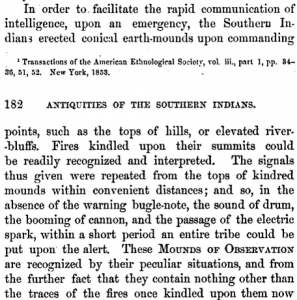Sadly this topic has remained a simmering controversy for far too long, mostly because of lack of effort on all our part. It isn’t hard to get it right, yet for some reason Poland isn’t getting credit due. The BBC in 2014 described a hugely important and historic event as simply a “quiet gathering”.
The debt owed by British wartime codebreakers to their Polish colleagues was acknowledged this week at a quiet gathering of spy chiefs. […] On the outskirts of Warsaw, some of the most senior spy bosses from Poland, France and Britain gathered this week in a nondescript but well-guarded building used by the Polish secret services. Their coming together was a way of marking the anniversary of a moment three-quarters of a century earlier when their predecessors held a meeting in Warsaw that played a crucial role in the victory over Hitler in World War Two.
I feel guilty. What have I done, as a historian of sorts, to help elevate this from quiet obscure ceremony to normalcy?
Mostly, for at least five years, I have bored friends with stories and tweeted about Poland’s contributions, which doesn’t feel like enough. So here’s my blog post to move the ball forward.
This is inspired by a new story in The Telegraph that the Polish government says more needs to be done.
Polish codebreakers ‘cracked Enigma before Alan Turing’ Diplomats say Poland’s key part in the deciphering the German system of codes in WWII has largely been overlooked
Time to stop overlooking. Let’s do this. Say it loud and proud, Poland broke the Nazi Enigma.
The Telegraph in 2012 versus 2016
News from The Telegraph in 2012 was: “Honour for overlooked Poles who were first to crack Enigma code”
…decades after Nazi Germany’s Enigma code was cracked, Poland has gone on the offensive to reclaim the glory of a cryptological success it feels has been unjustly claimed by Britain.
Frustrated at watching the achievements of the British wartime code-breakers at Bletchley Park lauded while those of Poles go overlooked, Poland’s parliament has launched a campaign to “restore justice” to the Polish men and women who first broke the Enigma codes.
[…]
The 2001 film Enigma, in particular, ruffled Polish feathers. The British production starring Kate Winslet and set in Bletchley Park made little mention of the Polish contribution to cracking the codes, and rubbed salt into the wounds by depicting the only Pole in the film as a traitor.
Some really good background in this 2012 article in The Telegraph. It is well written and accurate. Curious then how different it is from the story told to us in 2016.
Instead of pulling forward the earlier work, The Telegraph wrote a whole new version in 2016 filled with poorly researched ideas, pointing more towards the recent Turing movie, “The Imitation Game”.
Here are some questionable statements that jumped out at me.
Telegraph 2016: Poland Passed the Baton
…few people realise that early Enigma codes had already been broken by the Poles who then passed on the knowledge to Britain shortly before the outbreak of war.
It was not so simple. The Poles did not just pass along knowledge “shortly before” war. More to the point, given the escalation path of 1938, why was Britain waiting to the last moment before fall of Poland and declaration of war on Germany to receive crucial intelligence on German Enigma? Why were Brits far more focused on the Soviets as a threat instead of Germany, and why so interested in Spanish and Italian Enigmas instead of German?
Perhaps another way of asking this is what did the 1938 Munich Agreement, British appeasement of Nazi Germany, tell the Poles about trust in potential allies and giving away secrets?
Codebreakers from Britain early in 1939 had a kind of stalemate with Poland via talks setup by France. The three sides weren’t aligned exactly. Simply put it was British arrogance that led them to believe that their ability to break Enigma was best. When they met with the Polish the first time the British left thinking there was nothing they could gain.
Once war with Germany seemed unavoidable by summer of 1939, Poland simply ran out of time waiting for better terms of collaboration or warmer relations with British intelligence. Just before Germany rolled over Poland, codebreaking basically shifted to France, where negotiations continued with real alignment on German Enigma as the most pressing concern.
Months were basically wasted before the British were caught out as laggards and had to realize they had mistaken French and Polish cautions about Germany for incompetence. England realized their error fortunately before it was too late and rushed to learn from Poland, as war with Germany was announced.
Telegraph 2016: Poles Needed Help
By the time war broke out the Germans had increased the sophistication of the machine and the Poles were struggling to make more headway.
I hate the way this sounds. Hope it goes without saying Poles were struggling because…betrayal by Soviet defenses and invasion by Nazis while the world stood by and didn’t help. A highly secretive code-breaking team wasn’t going to just carry on effortlessly while their entire country was carved up and dismantled.
Sure the Germans had made a change, but that wasn’t the first time they altered Enigma (see Rejewski’s leading work on the Enigma Eintrittwalze – “entry wheel” – before the British figured it out, or transfer of Zygalski sheets to Bletchley, where they were known as Netz, short for Netz verfahren – “lattice method”). Difference by the time war broke out? The Polish had to destroy all their secret decoding systems and escape to France. I’ve read at first they tried to go to Britain and were denied due to confusion and secrecy (British embassy could not verify their roles). I’ve also read they went straight to France, where politics prevented them from moving to Bletchley. The bottom line is from the end of 1939 through early 1940 Turing and other Brits visited and studied Polish methods, learning of plans for new machines and preparing to build up operations in Bletchley Park.
“Struggling to make headway” is not a fair characterization relative to the many earlier mathematical struggles, which Poles obviously overcame on their own. The Poles had reconstructed Enigma and solved for daily keys. What made it hard to continue making headway? Staying under difficult conditions in Vichy France.
One of the original three who cracked Enigma, Rozycki, was killed in 1942 (lost at sea). The remaining Poles tried to escape to Spain that year. Langer, Ciezki and Palluth were captured by Germans. Rejewski and Zygalski escaped and landed in a Spanish prison. Only in 1943 these two finally enter England, where they were pushed aside into the Polish army in exile.
Struggling to make headway shouldn’t be blithely blamed on sophistication of the Enigma. Poles already had made plans to step up their game, which were handed over to England, as they tried to fight in Vichy France and stay alive.
Telegraph 2016: Blame Hollywood
…despite their help, history and Hollywood has largely ignored their role. The most recent film The Imitation Game, starring Benedict Cumberbatch, barely mentioned the Poles.
That’s right. And it’s a damn shame. Given that The Telegraph wrote in 2012 that a 2001 movie gave an unfair portrayal of the Poles, how did Imitation Game repeat the error? I found the movie highly disappointing.
Even more to the point there was in 2001 a book called “Stealing Secrets” that should have given Imitation Game producers all the background they needed on the true Turing story. Stealing Secrets doesn’t mince words here:
With the tide of the war having changed for the better, Bletchley’s leaders must have concluded in the cold calculus of realpolitik that is no longer had anything to gain from the Poles. […] Even now that the facts of the Poles’ Enigma breakthrough are out in the open, they must still compete in the marketplace of knowledge with earlier fictions. […] For a decade before the truth emerged about the Polish achievement, however, most of the English-speaking public was fed a steady diet of fiction masquerading as fact. […] Therefore, anyone who believes that Bletchley Park paved the road to victory in World War II must give credit to Poland for designing the road and mixing the pavement.
“Must give credit to Poland” as sage advice in 2001 and yet Imitation Game does none of that.
While visiting Bletchley Park I talked with the keepers about how Turing was portrayed relative to the Poles. They told me the film was rubbish and unfair. Their frankness surprised me and I found it refreshing. They basically had nothing good to say about the movie’s portrayal of events.
Telegraph 2016: Blame the Soviets
“We were trapped on the wrong side of the Iron Curtain during the Cold War which meant we did not get the credit that we should have received and nobody wanted to admit that anyone in Eastern Europe had anything to do with Enigma.
The Americans and English weren’t trapped by Soviets yet they too chose not to give credit. Does the world really need the Poles to repeatedly convince us of these facts as if the West doesn’t get it? And were the Poles blocked by Soviets? Sort of.
First, put this in terms of the 1940 Katyn massacre.
The Soviets in 1940 rounded up and assassinated 22,000 Polish military and intellectual elites (doctors, lawyers, professors), taking them into the woods and shooting them all in the back of the head. This massacre aimed to destroy any Polish resistance to Soviet control. America learned these details in 1943 from American POW forced by Germans to look at mass graves left behind by Soviets. Instead of bringing the news to light, the US kept it all a secret under the pretense of avoiding friction with Stalin.
That context makes it highly plausible the West was not about to credit Polish intellectuals for breaking Enigma when Stalin was around. But here’s the problem, nobody before the 1970s (20 years after Stalin) got public credit for cracking Enigma. There was literally no risk.
Second, put this in terms of the 1980 Solidarność.
Being on the wrong side of the Iron Curtain at that time is more relevant to our topic because that’s when Bletchley Park started leaking the stories. Now we’re talking about a prime time for strong characters and thaw stories, a time of Polish greatness and the Solidarity movement.
Remember the hardships the Polish cryptographers faced in 1940s France? None of them, even during German capture, leaked details of their work to anyone. Secrecy was crucial to success even after the end of the war. It was a top secret operation that only started to be verified more than 20 years after Stalin was out of the picture.
So really it isn’t about the Iron Curtain. It is about lazy historians in the West not doing a proper job with the facts. Blame is global and can’t be put on the Soviets repressing Poland’s voice, especially since we’re actually talking about the 1990s when these secret stories reached public sources; started to appeal to wider audiences. Still, Poland has to tell the world again and again until we accept it.
Telegraph 2016: Enigma is From End of WWI
The Enigma machine was invented by German engineer Arthur Sherbius at the end of the First World Wat [sic] and were used by the military and government of several countries.
Sherbius was applying for a patent for the Enigma in February 1918. WWI ended in November. Given events between those months I wouldn’t say Enigma came at the end. To me that would imply December or the start of 1919. There may even be some significance in timing relative to 1917; that was the year American scientist Vernam was given a task to invent a communication channel the Germans could not break, as patented in 1918. So “developed during the war” would be most appropriate in my mind.
In terms of several countries use…in 1927 the British government gave Enigma plans to Foss and Knox, code breakers, for review. A book about Knox’s role in breaking Enigma explains how Foss reported in theory it “could be broken given certain conditions” knowing as little as fifteen letters to figure out the machine settings. This effort led to the British and French working together on deciphering Spanish (Civil War) and Italian (invasion of Ethiopia) military communications in 1936.
Dillwyn (Dilly) Knox was one of the [British] Room 40 codebreakers during World War I. Since 1925 he had been trying to break the Enigma machine and had his first success on 4 April 1937 when he broke Franco’s Enigma K during the Spanish Civil War. When Germany starts using the Steckered Enigma for communication between Germany and Spain in 1938, he mounts an attack on the military Enigma, but is not successful as he unable to work out the wiring of the entry disc (ETW).
Here’s the key issue (pun not intended). Britain was not as keen to monitor German Enigma traffic until long after the French and Polish had warned of its importance. France was able to extract German documentation and gave it to Poland, who then cracked even the most advanced Enigma by 1933. That should put in perspective Britain listening to “several countries” signals in 1936. That was the year Germany was pushing into Rhineland and getting no push-back from Britain.
Telegraph 2016: Poland Involvement Well Known in WWII
…Polish involvement was well known during World War Two but during the communist time it was not so convenient to admit that there had been so much cooperation between Britain and Poland. It was a very special and very secret alliance.
This just makes no sense to me. It was top secret work, as mentioned above. No one knew about involvement, except those working in secrecy who couldn’t tell anyone outside. The secrecy extended well into the 1970s. During the communist time is when the story was not actually known, rather than being a convenience issue.
Also, rather than “admit…so much cooperation” I’d call it acknowledge the lack of working relationship once the British realized the Polish were ahead and captured all their secrets, as forced by German invasion of France.
Revisting Bletchley Park
What really would be nice to see is Bletchley Park incorporate French and Polish exhibits, perhaps even curated by representatives from those countries, to give factual explanations of their roles. After all it is meant to be a place to read about the “allied” effort. The Park could benefit from the help for upkeep and maintaining records. Meanwhile, visitors would get a more robust and fair portrayal of a “world” war.
At some point maybe I’ll post my photos here from my trip there, which show some of the odd statements made by British historians, minimizing the efforts of the Polish.
Reasons Against Remembering
Some want to erase history to make others look good; ignoring the Polish role as Allies lets the British or Americans stand out more.
Some want to erase history to make themselves look less bad; ignoring Polish role as Axis lets the Germans stand out more.
Either way overlooking real Polish history is bad for WWII history as well as our understanding of security. Bringing facts forward today should have no risk.
If we give credit to Polish code-breakers we are not diminishing the still monumental contributions of Alan Turing during WWII. We can be more correct in the presentation of historic facts without much impact or edits to Bletchley Park.
When we give credit to those in Poland who fought against Nazis and did so much right, it does not mean we can forget wrongs done by others, such as Erich von Zelewski the Polish Nazi who proposed creation of Auschwitz (just one out more than 10,000 prisoner camps under Nazi control, let alone nearly 1,000 forced labor camps for Jews inside Poland). By 1946 Nuremburg trials this Polish Nazi testified while he had no issue with Jews sent to die in camps he had “tried to prevent the destruction of Warsaw” and his work “saved hundreds of thousands of civilians and tens of thousands of soldiers of Polish nationality”.
As more sunlight comes for the Poles who fought against Nazis, it may clear the air for us to also discuss and better understand their opposite, the Poles who collaborated. So far we have the book “Hunt for the Jews: Betrayal and Murder in German-Occupied Poland“, which discusses “how the Germans were able to mobilize segments of the Polish society to take part in their plan to hunt down the Jews”. And we have dramatization films like Ida and Poklosie (Aftermath)
The 1946 Kielce Pogrom provides a sad study of how some Poles continued to kill even after the war had ended to try and finish what Germans could not – elimination of Jews from Poland. With that in mind please note a bill has been introduced in Poland making it illegal to mention any Nazi collusion. Such a bill of denial would be a tragedy for those of us who try to bring out examples of bad as well as good and learn from the past.
Right now we should remember a Polish team of mathematicians working with human intelligence for what they were: the first to crack the Nazi Enigma.
As I said at the start, this is no quiet affair. Time to stop overlooking. Let’s do this. Say it loud and proud, Poland broke the Nazi Enigma.
And for those looking, there’s a physical commemoration to Polish codebreakers at Bletchley Park, built in 2002 on the ground in the far back area by residences, behind a brick wall.




